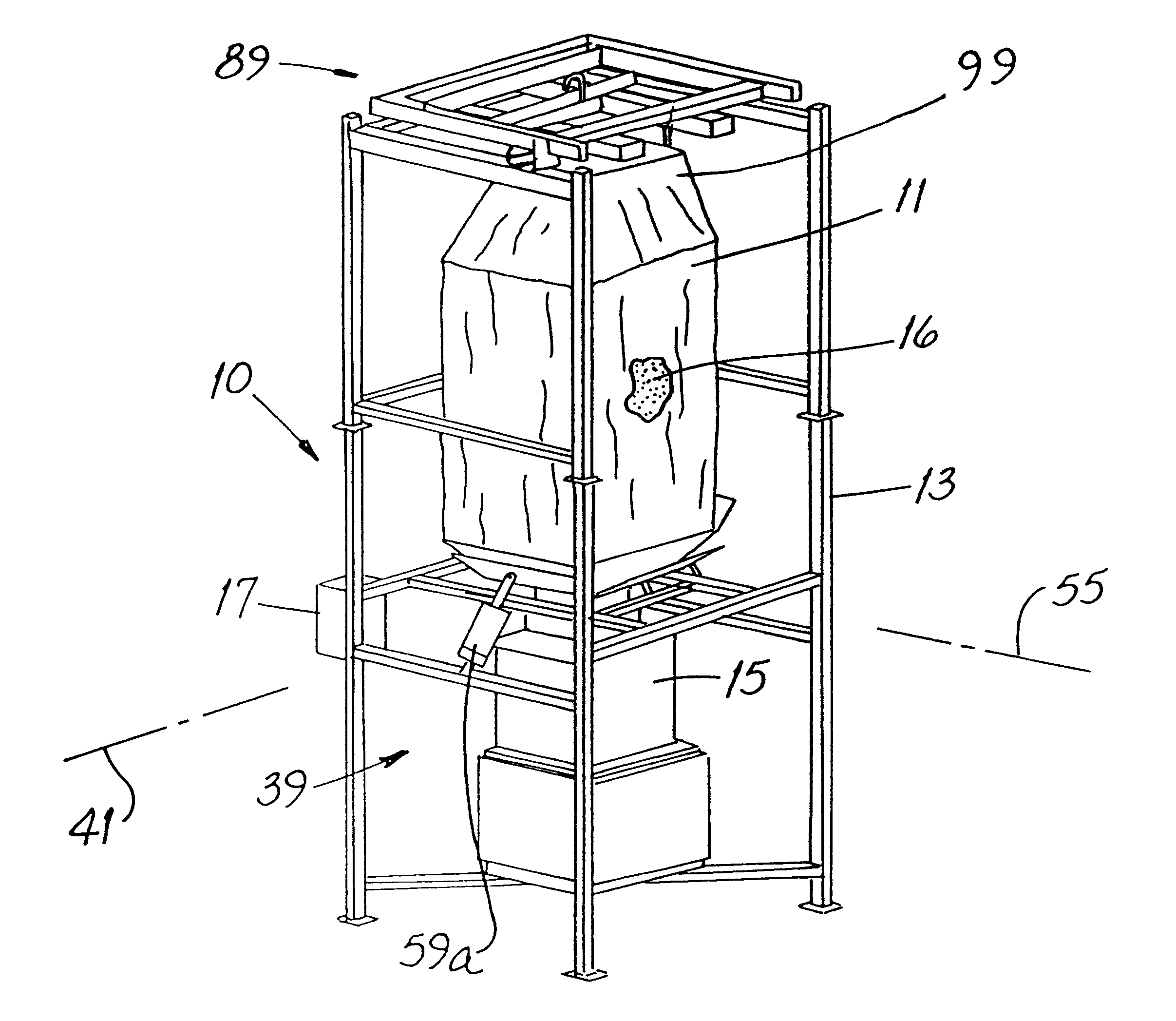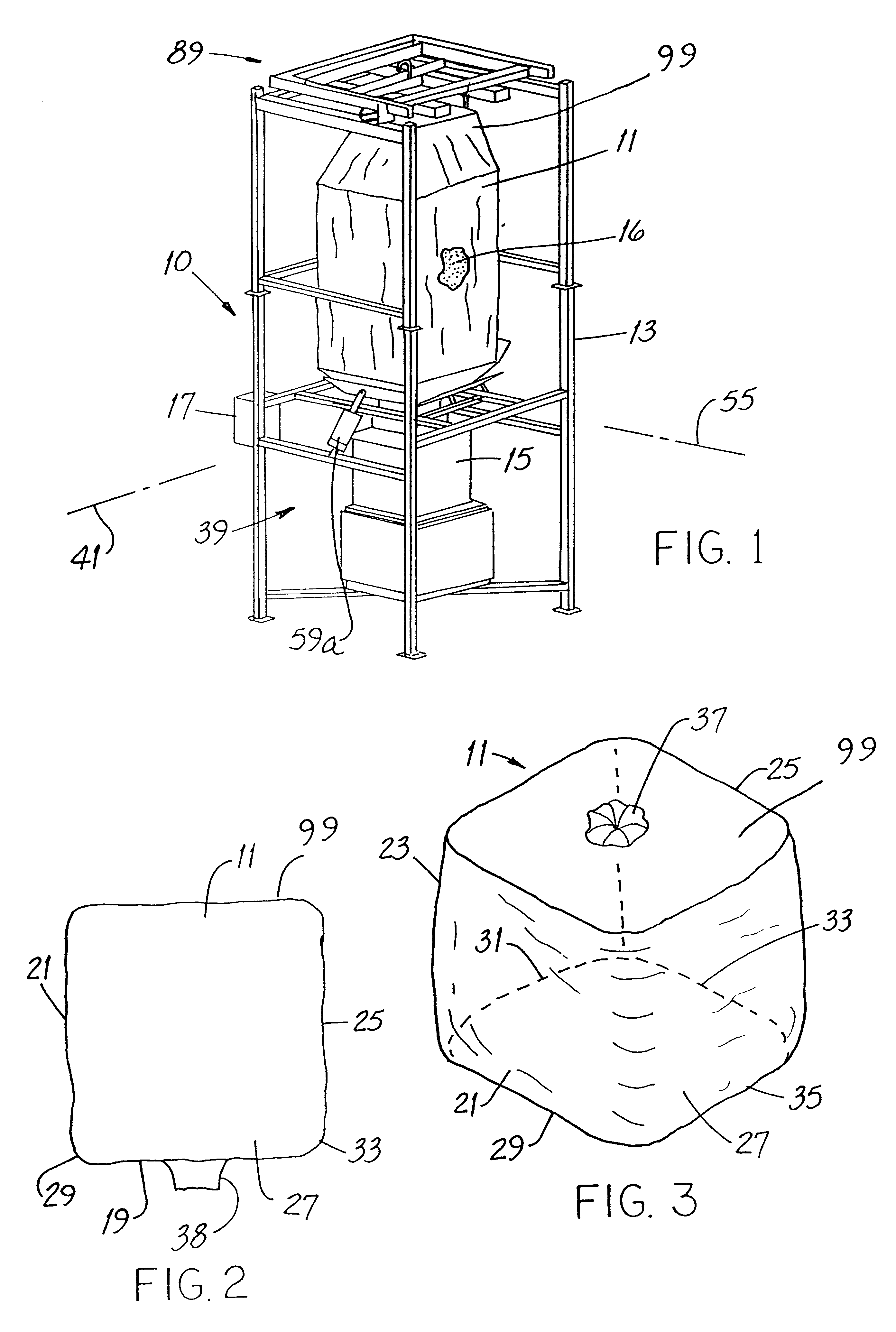Machine and method for unloading a bulk-material bag
a technology of bulk-material bags and machines, which is applied in the field of machines and methods for unloading bulk-material bags, can solve the problems of preventing material flow, affecting material flow, and prior art arrangements not optimally addressing the need for help, so as to reduce the distance through which the bag is unloaded, prevent bridging, and promote material flow
- Summary
- Abstract
- Description
- Claims
- Application Information
AI Technical Summary
Benefits of technology
Problems solved by technology
Method used
Image
Examples
Embodiment Construction
Referring to FIGS. 1, 2, 3 and 4, the invention involves improvements in a machine 10 for unloading a bulk-material bag 11. Exemplary materials, one of which might be contained in the bag 11 includes flour, rice hulls, pharmaceuticals, plastic, colorant and cement.
The machine 10 includes an upright, generally rectangular frame 13 having a receptacle 15 mounted in the lower portion thereof. Such receptacle 15 may be, for example, a screw feeder, a receiving hopper or the end of a weigh belt of the type which weighs the material thereon. A microprocessor-based process controller 17 is conveniently mounted on the frame 13.
An exemplary bag 11 is of the type having a bottom portion 19 and first, second, third and fourth side portions 21, 23, 25, 27, respectively. First, second, third and fourth transition portions 29, 31, 33, 35, respectively, extend between the bottom portion 19 and the correspondingly-numbered side portions. The bag 11 also includes a top fill port 37 and a bottom spou...
PUM
 Login to View More
Login to View More Abstract
Description
Claims
Application Information
 Login to View More
Login to View More - R&D
- Intellectual Property
- Life Sciences
- Materials
- Tech Scout
- Unparalleled Data Quality
- Higher Quality Content
- 60% Fewer Hallucinations
Browse by: Latest US Patents, China's latest patents, Technical Efficacy Thesaurus, Application Domain, Technology Topic, Popular Technical Reports.
© 2025 PatSnap. All rights reserved.Legal|Privacy policy|Modern Slavery Act Transparency Statement|Sitemap|About US| Contact US: help@patsnap.com



